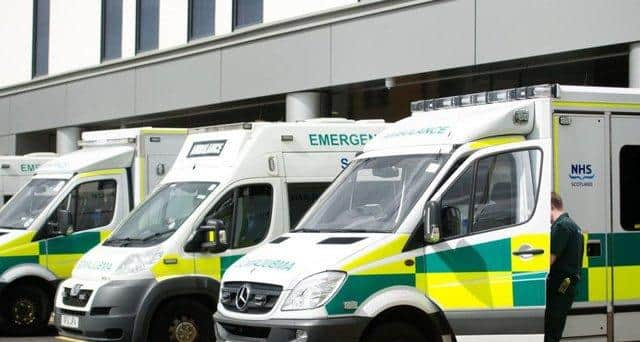Covid Scotland: Twenty-fold increase in people waiting more than 12 hours for an ambulance
Figures obtained by the Scotsman under the Freedom of Information Act show 297 patient calls in the least urgent or “yellow” category waited at least 12 hours for an ambulance between August 2020 and July this year, compared to 15 the previous year.
Some 56 patients waited more than 16 hours, compared to just one the year before.


Advertisement
Hide AdAdvertisement
Hide AdSome 44,000 emergency incidents were not attended at all, an increase from 11 per cent in 2019/20 to 15 per cent the following year.
The Scottish Ambulance Service said it had faced “extreme pressures” and apologised to those forced to wait.
A spokesperson said calls with long waiting times were often initially classed as a “non-emergency” request, and subsequently upgraded to the yellow category, the least urgent of the “emergency” classifications.
It comes as health secretary Humza Yousaf is expected to update Parliament today on a request made last week from the Scottish Government to the Army for help supporting the ambulance service.
One man, who waited 16 hours for an ambulance to arrive in July told how he spent a night in too much pain to move, unable even to get to the toilet.
The man, in his early 50s and living in Fife, dislocated his knee at home on a Tuesday afternoon in July.
He was unable to move himself outside and to his car for a lift to the nearest A&E department, 15 miles away.
After calling 999 around 4pm, he was told an ambulance would be sent to collect him.
Advertisement
Hide AdAdvertisement
Hide AdBut it was not until 8am the following morning the ambulance arrived.
"It was too painful to move, but I was able to find a sitting position with my knee at a right angle where the pain was bearable,” he said.
"I spent the whole night sitting in a dining room chair, unable even to get to the toilet.”
The man, who does not wish to be named, said the ambulance staff were “great” and did all they could within their constraints.
“They called every couple of hours to check I was still OK and, to be fair, my life was not in danger and I was not bleeding,” he said.
"I'm sure the call would have been escalated if the blood supply or nerves to my foot had been affected.
"At one point I was told that the non-urgent waiting time in my area was nine-and-a-half hours and it was clear that there were simply not enough ambulances to deal with both emergency and non-emergency cases.
"When the paramedics arrived, they were very apologetic and clearly mortified at the length of time I had waited. The care I received from them and at hospital was superb.”
Advertisement
Hide AdAdvertisement
Hide AdSome 87 per cent of calls in the “yellow” category were attended within two hours in 2020/21, compared to 95 per cent the previous year.
Just under 9,000 incidents took longer than four hours for crews to get to.
A Scottish Ambulance spokesperson said: “The vast majority of patients in life-threatening situations will receive a response in under ten minutes, and for other emergency patients in under 40 minutes. However, we do apologise to any patient who has to wait longer.
"We are facing extreme pressures on our services at present and prioritise patients with the most serious conditions, but our staff are working as hard as they can to get to all patients as quickly as they can.”
The spokesperson said ambulances may not attend incidents in the case that a patient’s condition improves, their care is passed to another provider, or the call is stood down.
Ambulance calls are assessed into five categories: Purple, the most urgent; red; amber; yellow; and green, which includes calls which may not be suitable for the ambulance service and are passed elsewhere.
A message from the Editor:
Thank you for reading this article. We're more reliant on your support than ever as the shift in consumer habits brought about by coronavirus impacts our advertisers.
If you haven't already, please consider supporting our trusted, fact-checked journalism by taking out a digital subscription.
Comments
Want to join the conversation? Please or to comment on this article.
